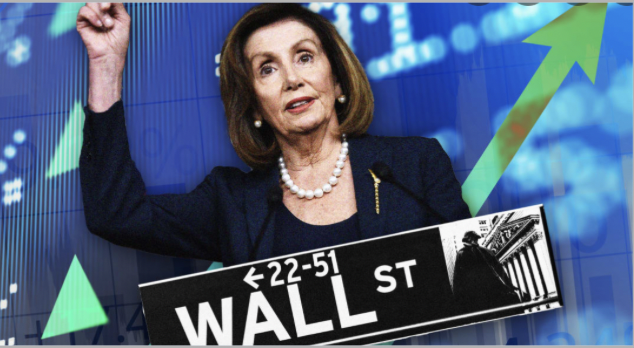A mid-week rally lifted stocks last week, but by Friday, the market had given back much of the gains. The moves higher were driven by comments from Fed Chair Jerome Powell signaling smaller interest rate hikes could start as early as the December 13 – 14 FOMC meeting. However, a stronger-than-expected jobs report on Friday raised concerns about prolonged aggressive Fed tightening, taking the wind out of the market’s sails. The major indices finished with modest weekly gains, with the Dow gaining 0.2%, the S&P 500 rising 1.1%, and the Nasdaq climbing 2.1%. The S&P 500 recorded its second positive month in a row in November, posting a 5.4% total return. All 11 sectors were positive; materials were the strongest performer, and consumer discretionary was the weakest, according to S&P Dow Jones Indices.
The week ahead will bring more updates on inflation and the state of the economy. Market watchers will be looking for clues on how high inflation, rising interest rates, and an economic slowdown are impacting consumer confidence when the University of Michigan releases the preliminary December reading of its Consumer Sentiment Index (MCSI). Also, on Friday, the Bureau of Labor Statistics (BLS) will release its Producer Price Index (PPI) for November. The PPI tracks inflation from the standpoint of goods-producing businesses and is considered a bellwether for the trajectory of consumer inflation.
The decline in tech has brought investors what many would consider a once-in-a-lifetime opportunity in some notable names. Our first recommendation for this week is one such company with many positive attributes, including a deep economic moat, high operating margins, and a strong balance sheet to boot.
Google parent Alphabet (GOOG, GOOGL) shares traded for as low as $83.49 in the days following its recent 20-for-1 stock split. The stock has been steadily recovering, stacking on more than 20% over the past month. At around $100 a share, the stock is still accessible for investors seeking big tech at a fair price. The company has multiple catalysts in the wings, which should keep momentum strong as enthusiasm for big tech stocks re-accelerates.
Over the last five years, GOOGL is up 101%, crushing the Nasdaq’s 64% gain and the Internet Services Market’s 72% gain over the same period. The company posted earnings per share of $1.21 on revenue that grew by 12.6% year-over-year to $69.69 billion. The consensus sees earnings dropping 7% in 2022 but rising in 2023 at $5.80 a share. Top-line growth is expected, with 2022 sales expected to climb 11% and another 10% in 2023 to $260.44 billion.
Key catalysts to watch out for include its artificial intelligence tools that help users search in new ways, such as Google Lens, which is currently being used over 8 billion times a month. Google also recently introduced a new multi-search feature to help users search with both words and images simultaneously. Shares also have a strong rebound potential once the digital ad market recovers.
At 20 times forward earnings, Alphabet shares are trading in line with the S&P 500. Still, the current multiple may underestimate the company’s potential to re-accelerate earnings once its many growth catalysts start to play out.
A name offering defensive growth from the desirable sector currently is UnitedHealth Group (UNH). As the most significant health insurance company by market cap and market share, UNH’s size gives it built-in advantages over peers from the group.
Despite the market slowdown this year, UNH’s share price is up more than 6%, outperforming its peers and the broader market. The Health Care Select Sector SPDR Fund (XLV) is up a fraction of a percent YTD, while the S&P 500 is still down more than 15%.
Due to UnitedHealth’s rapidly expanding reach, Q3 revenue was up 12% from the same quarter last year to $80.89 billion. Earnings came in at $5.79 a share, surpassing the consensus estimate of $5.42 per share. In the third quarter, the company reported expanding its customer base by approximately 850,000, including 185,000. “The strength of our performance reflects the diligence and determination of our colleagues to improve people’s experience across the health care system and make high-quality care simpler, more accessible, and more affordable,” said Andrew Witty, CEO of UNH. The company also increased its 2022 EPS view to $21.85-$22.05 from $21.40-$21.90. The consensus expectation is at the low end of the company’s forecast, at $21.87, suggesting that the pros on Wall Street may not give enough credit to the health insurance giant.
Momentum should be supported in the coming years thanks to UNH’s strong market position and attractive core business. Its international business expansion provides substantial diversification benefits and shields against the impact of tightening U.S. regulations while allowing the Dow giant to tap into the $8.3 trillion spent annually on global healthcare.
UnitedHealth has a solid history of rewarding investors with a steady paycheck. The company went to a quarterly dividend in 2010 and, since then, has increased its dividend every year. That includes a 16% bump last year to $1.45 a share, which works out to a yield of 1.10% at its current price. UNH’s payout has increased 31% over the past five years, and the stock has a 5-year annualized dividend growth rate of 17.18%. The stock looks like a value at about 26 times earnings, compared to the healthcare industry, where the average P/E is around 34.
Vertex Pharmaceuticals (VRTX) is the undisputed leader in cystic fibrosis therapies. The company’s portfolio of approved CF drugs will deliver at least an estimated $8.4 billion this year, made possible by intense market penetration and decades-long devotion to research and development in the space.
So far, the company has remained strongly profitable and has continued to expand revenue within the CF market at a steady pace. If management’s plans for expanded approvals for younger age cohorts continue to come to fruition over the next few years, Vertex will eventually be treating as many as 90% of all people with CF.
The company is moving its pipeline beyond CF with a handful of mid-stage clinical programs for pain relief, kidney disease, and genetic hematologic disorders like sickle cell disease. In other words, even if it eventually corners the entire CF therapy market, there will still be other growth opportunities.
One potential catalyst is its partnership with CRISPR Therapeutics (CRSP) in developing gene-editing treatments for two rare blood disorders, which is expected to begin regulatory studies in March 2023. This means investors can look forward to a steadily increasing flow of new revenue and expanded approvals, which should significantly support the stock’s price.
Of 26 analysts offering recommendations for VRTX, 18 give the stocks a Buy rating, and nine rate it a Hold. There are no Sell ratings. It seems likely that Vertex will reward patient investors as the steadily growing biopharma company seems ripe for expansion for years to come.
You might also like:
- Bank bailout a cover-up for a far worse plot?
- Surprising twist gives Biden landslide election win?
- The Two Men Destroying America
- “Future Fuel” will unleash $11 trillion wave of wealth
- This “peeing car” is at the center of an $11.7 trillion energy revolution
- The End Of The US Dollar
- Get Your Money Out of U.S. Banks Immediatley




















 and then
and then